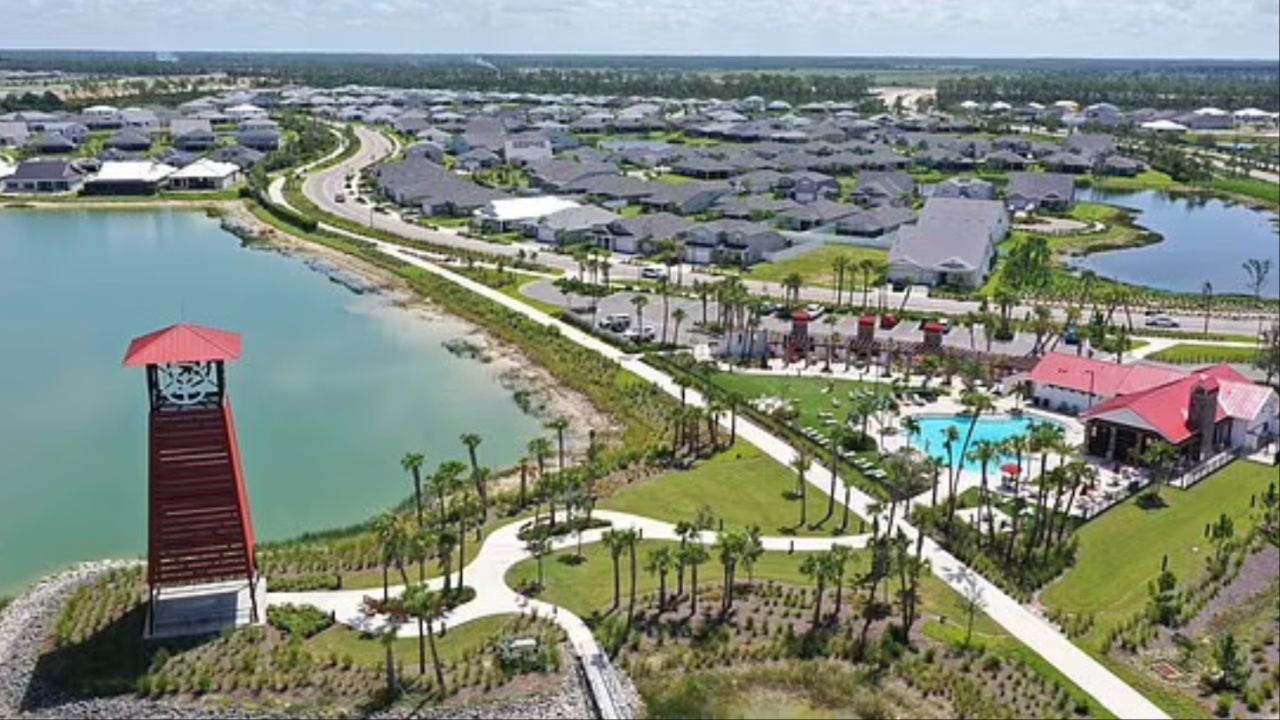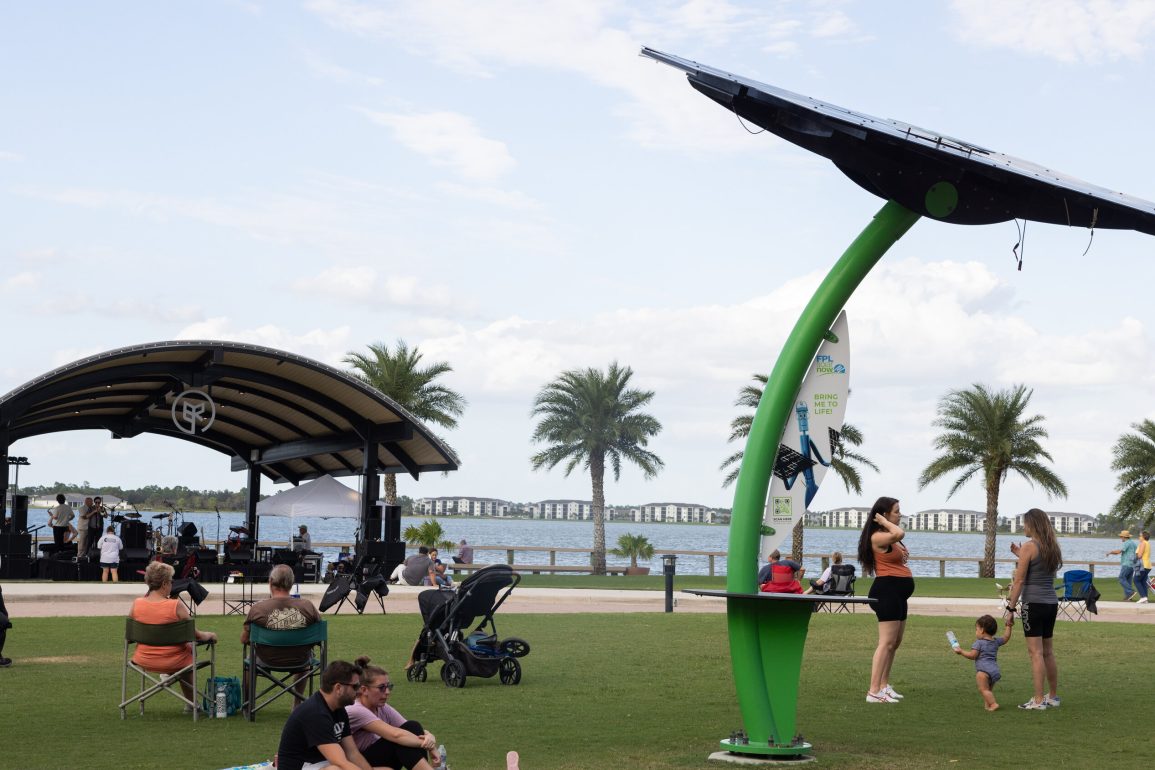Babcock Ranch, a sustainable community in Florida, successfully weathered Hurricane Milton with minimal damage, while much of the state suffered significant destruction. The town, built to resist hurricane-grade winds of over 150 miles per hour, only experienced minor issues such as downed traffic lights and trees but never lost power.
In contrast, the hurricane left more than three million residents across Florida without electricity and caused the deaths of 24 people. The town’s resilience can be attributed to its design, which includes solar power and underground transmission systems, as well as preserved wetlands to manage excess water and prevent flooding.
Before the storm hit, Babcock Ranch prepared by transforming local facilities into shelters for evacuees, drawing people from nearby areas like Fort Myers. Around 2,000 evacuees sought refuge in the town’s schools and sports complex. Syd Kitson, co-founder of the town and a former NFL player, praised Governor Ron DeSantis for announcing that the town was open to help people escape the storm.
Kitson acknowledged that Babcock Ranch’s design saved lives by offering a safe haven in dangerous weather conditions, further highlighting its importance in emergency preparedness.
In addition to its storm-resistant infrastructure, Babcock Ranch is dedicated to sustainability. The town operates with a 150-megawatt solar farm and utilizes underground power systems that help maintain electricity even during severe weather.

Its location on a preserved wetland allows it to manage flooding more effectively than other areas. After the storm, the community united to support those affected by Milton, organizing donation drives and offering essentials to neighbors in need while enjoying a gathering with food trucks and entertainment.
Babcock Ranch had previously proven its resilience during Hurricane Ian in 2022, which caused billions in damages to nearby communities but left the town relatively unscathed. Kitson emphasized the importance of building more sustainable communities to address climate change and minimize hurricane damage.
He noted that towns designed with sustainability in mind, like Babcock Ranch, could influence changes in insurance policies, as they offer greater protection and security during extreme weather events.
Other Florida developments, such as Hunters Point, also demonstrated the value of sustainability during Hurricane Milton. This smaller housing community, which uses solar-battery systems, managed to keep power for days after the storm.
The founder of Hunters Point, Marshall Gobuty, expressed satisfaction in using sustainable methods to withstand the hurricane and plans to expand his development. Both Babcock Ranch and Hunters Point are pioneering examples of how environmentally responsible building practices can help communities thrive in the face of climate-related challenges.

